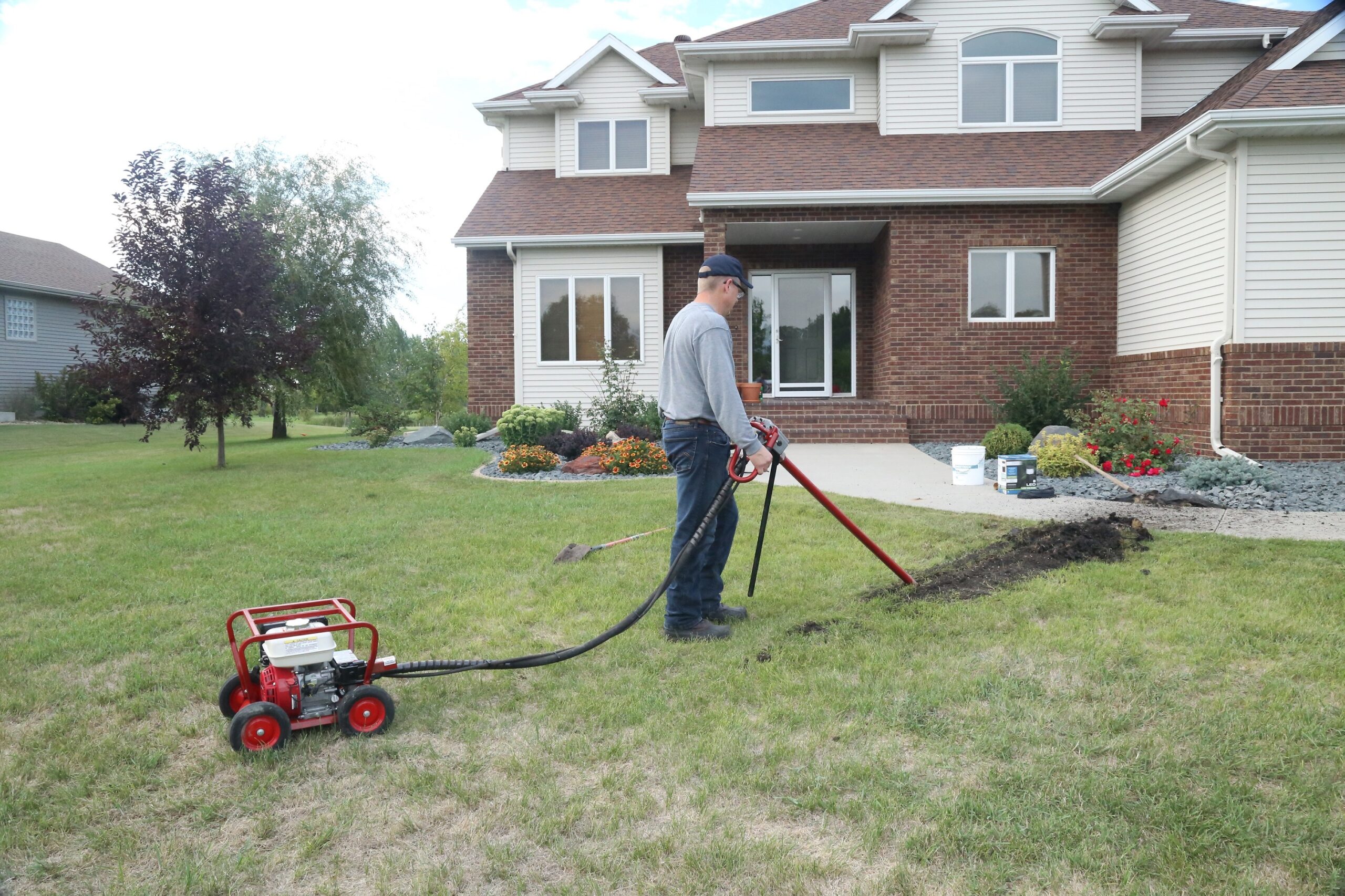
Features
Equipment
Turf Care Equipment
Horizontal boring allows for landscape feature installations without hardscape disruptions
Increasing versatility with wet, dry attachments
February 17, 2023 By Joe Haynes

Sometimes the easiest way to get through a problem is to go under it. Whether installing landscape features, cable, pipe and more, obstacles like sidewalks, driveways and roads can present a challenge to simple trenching methods. Manual methods are always an option, but contractors are always looking for ways to make their projects more efficient. With a horizontal boring drill attachment, they can easily tackle these obstacles while operating more efficiently, keeping costs low and eliminating damage to above-ground features.
By incorporating an attachment that pairs with a mechanical earth drill, contractors can make it easier to accomplish just about any drilling – vertically or horizontally. Here’s how contractors can add horizontal boring attachments and the available options.
Attachment requirements
Many mechanical drills currently on the market lack flexibility when it comes to adding a horizontal boring option, so it’s important that contractors do some homework up front to ensure they pick a compatible drill. The main component required to transition a drill from vertical to horizontal drilling is a flexible drive shaft. This allows the operator to orient the handle to the appropriate angle for horizontal boring.
After ensuring the drill has a flexible drive shaft, contractors need to determine which horizontal boring kit is most appropriate for their operation – a dry auger kit or a wet drilling kit.
Sidewalk boring: dry auger kit
When drilling shorter distances – such as under a sidewalk – manufacturers will usually recommend a dry auger kit. This option allows users to bore four feet in less than a minute. Some manufacturers offer this kit as a five-foot auger with a three-inch diameter bit.
A three-inch diameter hole provides the perfect size channel for most low-voltage electrical, plumbing and water lines, making this kit a great choice for small-scale projects. Beyond that, contractors and can easily install landscape lighting wire, water softener lines, sprinkler systems, gas lines and more.
Driveway boring: wet drilling kit
A wet drilling kit provides crews with a solution to bore up to 50 feet. This setup can bore under a 30-foot driveway in as little as 10 to 15 minutes and eliminates the need to break up established concrete or go around large pieces of cement.
As its name implies, the wet drilling kit requires the use of water. Contractors connect a garden hose to water pipe which is connected to their drill and a drill bit. This setup operates based on traditional mud rotary drilling principles: water fills the whole to flush away the cuttings while also providing stability to the hole to prevent collapse.
Wet drilling kits require water pipe for the length of the bore plus 15 feet, along with necessary couplings. Often these kits come with a variety of water drill bits, typically ranging in size from two to four inches. Similar to the sidewalk drill kit, a three-inch bit creates a large enough hole for small-scale applications. When boring more than 10 or 15 feet, it’s recommended to start with a two-inch hole for better control. The opening can then be expanded with a wider bit for larger installation requirements.
Tips for horizontal boring success
When it comes to soil types, here’s a general rule of thumb: If the soil can be shovelled manually, it can be removed with horizontal boring. The biggest obstacle users will come across is rocks in the soil, which will stop the drill from penetrating. If this happens, remove the drill and move to a different spot or drill a few inches lower. The typical drilling depth for horizontal boring – under both sidewalks and driveways – is six to eight inches.
If customers are drilling in sandy soil, it’s important to insert the guide pipe or wires right after the hole is drilled, to avoid collapse.
A common outcome for first-time horizontal boring users is an uneven, downward angled hole. While this doesn’t necessarily make the hole unusable, it’s not ideal. To avoid an uneven bore, contractors should dig a level guide trench. The starter trench should be long enough to fit the entire auger and only slightly wider, ensuring the drill doesn’t move around during operation. Contractors should position the drill in the very bottom of the trench and continuously apply pressure while drilling to maintain a tight fit.
No matter the scale of the job, it’s important to gather all the details and necessary equipment before beginning. Increased versatility equals increased profits. By adding horizontal boring attachments, contractors can take on more jobs, operate more efficiently and reduce costs. With the right equipment, horizontal boring can be a breeze.
Joe Haynes is president of Little Beaver
Print this page